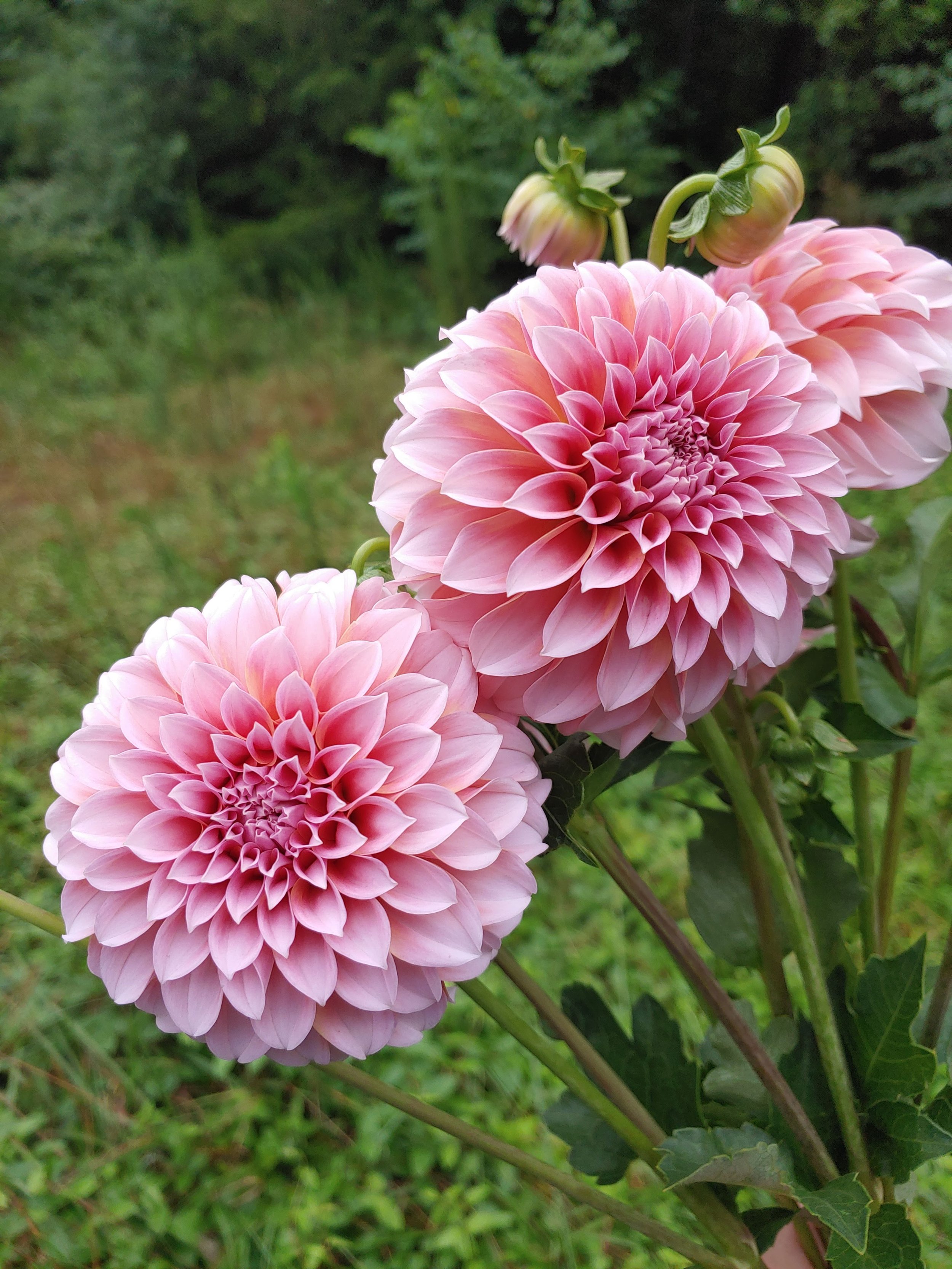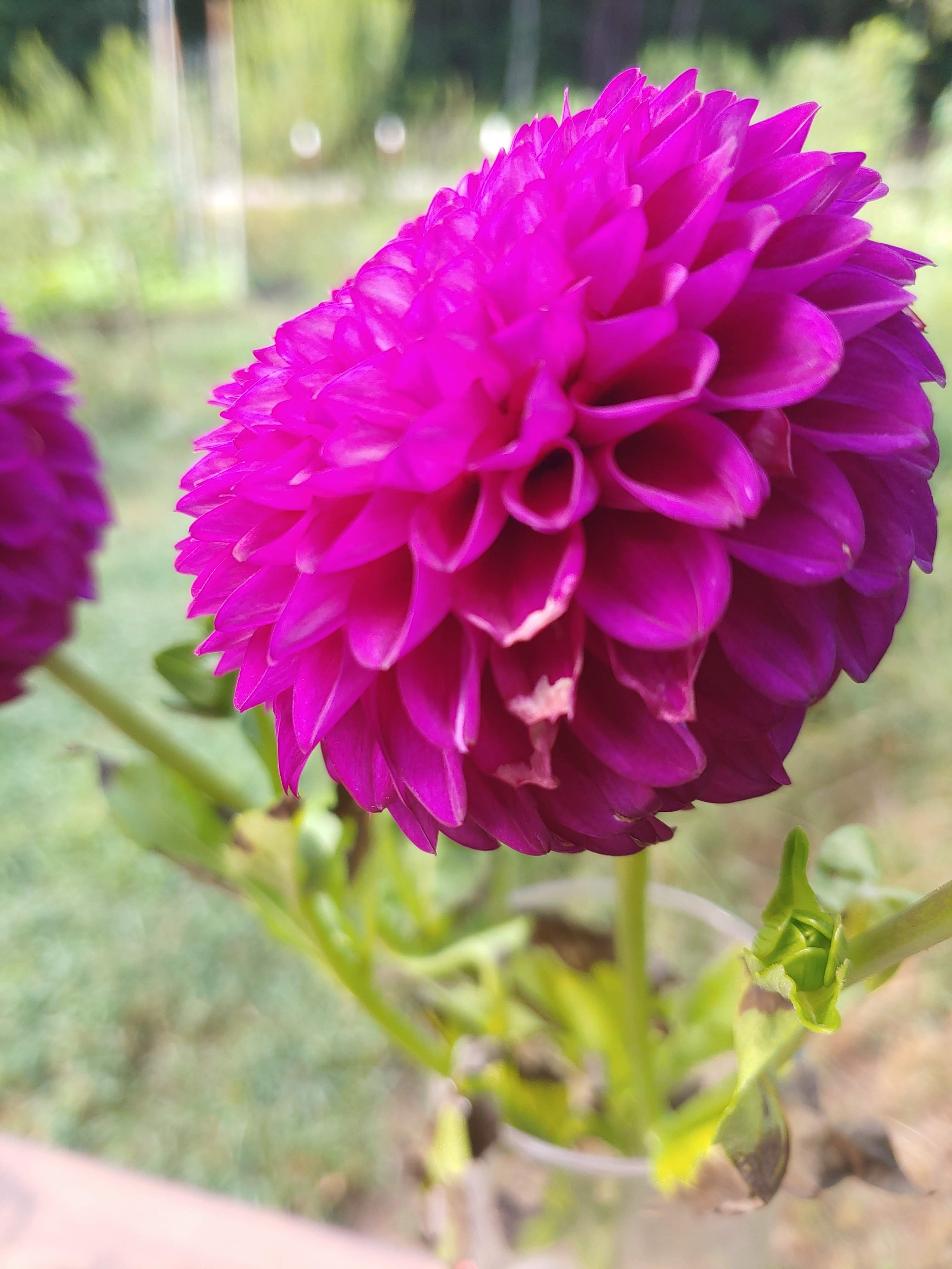Winter of 2020-2021, I over-wintered some tubers in the ground for the first time. And— I really learned some things. Fast forward a few years and I decided to do it again this past year. I wanted a chance to fix the mistakes I made.
We still dig 95% of our tubers since we sell them each year. However, over-wintering in the ground really helps my perspective when talking dahlias with a lot of you. Most of the home gardeners in my area leave their tubers in the ground. We don’t freeze hard enough for the ground to freeze solid. As long as you have good drainage, your tubers will do just fine in the ground. (Zone 7b-8a, South Carolina) In fact, I recommend most people leave them in unless they have a temperature and humidity control storage environment.
A Bed of Dahlias From mid April 2021
Overwintering in the ground works pretty reliably in Zone 7 and above. Some zone 6 can do it. Occasionally I hear about a zone 5 but that takes some work and I wouldn’t risk it.
So when you overwinter, your tubers will begin to sprout once your ground gets warm enough. We overwintered in 2 different environments- on our farm in a cooler than average spot. The second was our off farm plot that sits high and very open to the wind. In early March I began checking to see if they were resprouting. I found our off farm plot was already greening up when I removed the tarp. This location gets full sun all day so the soil is a bit warmer even though it is more exposed. It runs warmer when the suns out but much colder on a freezing night than our home farm.
The home farm area sits between 2 hoop houses so has wind protection but that also means a bit of shade and gets enough sun to grow dahlias but not 100% all day full sun. So in early March, those tuber clumps were still slumbering when we removed the tarp. I noticed that this week (3 weeks after removing the cover) they were beginning to sprout.
*** Side Note— Do you have to use a tarp to cover during the winter? No- We used one for several reasons: weed control. We needed to kill off some weed pressure on the off farm plot. We also needed to be able to control how much water was getting in because that plot doesn’t have as good of drainage as our on farm plot. (in fact, we lost about 50% of one variety on that plot) As long as you planted in an area with good drainage, I’d recommend a bit of mulch and that will work just fine in the home garden. ***
Now- you’ve probably already thought— It’s March- do you really want your tubers sprouting then? Well no- but it’s not the end of the world and when you leave them in the ground, you have to roll with the punches. So I’ve been taking pictures over the past few weeks of what’s been happening:
The above pictures are from right after we removed the tarp from the off farm plot. You can see how the tips got a bit burned from not getting the tarp off sooner. But I didn’t worry about it because I knew we had a frost coming.
after an early Spring Frost
When you let your tubers sprout naturally, you are probably going to have a frost that knocks them back at some point. So I just let it happen because I knew they’d resprout.
Resprouted tuber after a spring frost
This picture above is about 8-10 days after the frost picture. It doesn’t take long. They may go frosty again- we are still 3 weeks from our last frost date. But it’s okay because I know they’ll resprout again.
The first time I over-wintered, I covered with frost cloth each time we got a Spring frost. But I learned that was just extra work- they are going to do what the weather tells them. And once we level off temperature wise, they will grow like crazy!
So what do we do with these dahlias once they sprout and stay sprouted? Fertilize!!! This was a major mistake I made the first time I over-wintered. I didn’t fertilize early enough. Once they are sprouted, begin your fertilization. They need food- they are hungry after that long winter’s nap!
Also make sure to re-install any support structures if you removed them throughout the winter. They will need them sooner than you think.
Lastly- the question I always get: So if I over-winter in the ground, should I divide my tubers and if so how often?
For years, leaving tubers in and rarely dividing was the norm. However— in this day and age of virus potential in dahlias, I think it’s good to check your tubers often. So I recommend digging up your tubers at least every other year to check for gall diseases (crown and leafy). It’s hard to tell above the surface if you have these. You can then divide or just put the clump back into the ground. If you are introducing a lot of new varieties each year, I would check more often- I’d dig your clumps each spring, inspect and then replant.
Yes- I know this is extra work but it will go a long way to keeping your plants healthy!
So go check those clumps— hopefully you’ve got some green sprouts! If you need help dividing your tubers, come join our workshop on April 13- Dahlia Dividing and Planting. It’ll be a morning of exploring the beauty of Spring on a flower farm and learning how to divide your tubers like a pro! Sign up Here!











































